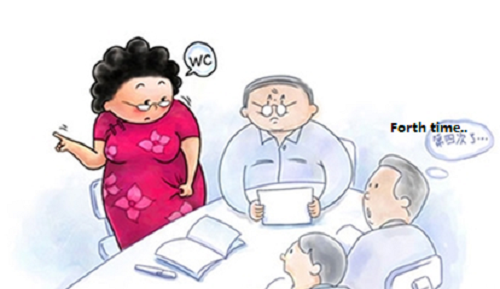Diabetes is one of the most common endocrine and metabolic diseases, with genetic susceptibility and onset triggered by environmental factors. With the development of society and economy, changes in people’s lifestyles (increased energy intake, reduced exercise, etc.) and an aging population, the incidence of type 2 diabetes is increasing year by year globally, especially in developing countries. Fast (expected to increase by 170% by 2025), showing an upward trend. Diabetes has become the third non-communicable disease that threatens people's health and life after cardiovascular disease and cancer.
Type 2 diabetes symptoms related to metabolic disorders, especially "three more and one less," are often not very or only partially manifest in type 2 diabetes mellitus; the other manifestations are manifestations of various acute and chronic complications.
1. Polyuria is due to hyperglycemia, exceeding the renal sugar threshold (8.89 ~ 10.0mmol / L), glomerular glucose out of the glucose can not be completely reabsorbed by the renal tubules, the formation of osmotic diuresis. The higher the blood sugar, the more urine sugar excretion, the more urine volume, 24h urine volume up to 5000 ~ 10000ml. However, in the elderly and those with kidney disease, the renal glycogen threshold is increased, and urine sugar is discharged. When the blood glucose is moderately or moderately high, polyuria may not be obvious.
2. Multi-drinking mainly due to high blood glucose plasma osmotic pressure was significantly increased, combined with polyuria, excessive water loss, intracellular dehydration occurs, aggravate hyperglycemia, plasma osmotic pressure is further significantly increased, stimulate thirsty center, leading to thirst And drink more. Drink more to further increase the polyuria.
3. The mechanism of eating more food is not very clear. Most scholars tend to lower glucose utilization (difference in glucose concentration in arteriovenous blood before and after entering and leaving the tissue cells). Normal fasting blood glucose concentration in the arteriovenous blood is reduced, which stimulates the feeding center, resulting in hunger; increased blood sugar after ingestion, increased blood-vessel concentration (greater than 0.829 mmoL/L), inhibition of feeding center, satiety The center is excited and the request for food disappears. However, due to the absolute or relative deficiency of insulin or insulin-insensitive tissues, the ability of tissue to take advantage of glucose is reduced. Although the blood glucose is at a high level, the concentration of glucose in arteriovenous blood is very small, and the tissue cells are actually in a state of “hunger”. "In order to stimulate the feeding center, causing hunger and more food; in addition, the body can not make full use of glucose, a large amount of glucose excreted from the urine, so the body is actually in a semi-starvation state, lack of energy also caused the loss of appetite.
4. Weight loss Diabetes patients have normal appetite and even increased appetite, but weight loss is mainly due to absolute or relative lack of insulin or insulin resistance, the body can not make full use of glucose to produce energy, resulting in increased fat and protein breakdown, excessive consumption, Negative nitrogen balance, weight gradually decreased, and even weight loss. Once the diabetes is treated with reasonable care and good control is achieved, weight loss can be controlled and even rebounded. For example, diabetics lose weight or lose weight significantly during treatment, suggesting that they may have poor metabolic control or other chronic consumptive diseases.
5. Fatigue is also common in people with diabetes, because the glucose can not be fully oxidized, that is, the body can not fully use glucose and effectively release energy, while the organization of water loss, electrolyte imbalance and negative nitrogen balance, and feel the body fatigue, Apathetic.
6. Vision decline Many people with diabetes complained of decreased or blurred vision during early treatment. This may be due to the change in crystal osmotic pressure caused by hyperglycemia, resulting in changes in the refractive power of the crystal. Most of the early general functional changes, once the blood glucose is well controlled, vision can return to normal faster.





 Price is 8-20% Lower Than Other
Price is 8-20% Lower Than Other






